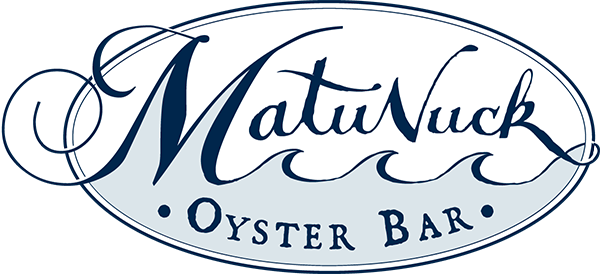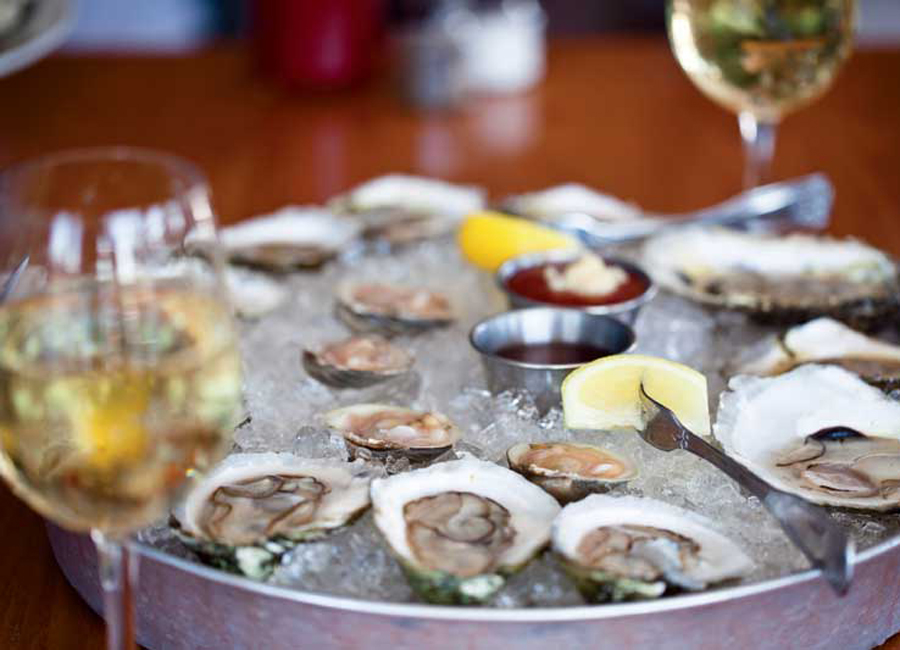Shucking off the cold
R.I. oyster farmers find winter harvests a boon
By Bina Venkataraman, Globe Correspondent | January 26, 2009
SOUTH KINGSTOWN, R.I. – “How many do you need?” Perry Raso shouted into a walkie-talkie as his motorboat plowed through chunks of ice in Potters Pond, his face ruddy from the biting wind and his eyelashes encrusted with snow.
Raso had spent a snowy morning harvesting oysters from a salt pond separated by a barrier beach from Block Island Sound. Clad in a waterproof suit, he waded waist-deep into the icy soup, lifted giant mesh bags of bivalves from the bottom, and poured out the oysters that had reached a size suitable for market.
“Ten bags,” replied the wholesaler on the walkie-talkie.
The news was good – and bad. Raso would be able to sell 1,000 more oysters, a harvest worth at least $600, but he would have to return the next day when temperatures were expected to fall into the single digits.
In this frigid season, Raso and other Rhode Island oyster farmers see their business boom as many growers in Cape Cod and Canada run out of oysters or stop working because of the ice. During the first three months of 2008, Raso gathered more than half of the 400,000 oysters he sold during the entire year.
Oyster farming once thrived in the Ocean State. In the early 1900s, leases for underwater oyster farms stretched across about a third of Narragansett Bay and shucking houses lined its shores. Today, dozens of growers are trying to revive the industry, which was wiped out by parasites, pollutants, and a devastating hurricane. The wintertime harvest is how they get an edge with customers who crave oysters year-round and want a steady supply.
“In the last 10 years, there’s been a big resurgence,” said David Alves, the state’s aquaculture coordinator. It began in the late ’80s, when Moonstone Oyster Farm secured a lease to grow oysters in Point Judith Pond, near the state’s southeastern tip. In just a few years, Moonstone showed that growing oysters could yield a good profit. “Some fishermen saw the writing on the wall: ‘If there are not going to be a lot of fish around, we have to find another way to make a living,’ ” Alves said.
In 1996, Rhode Island had only six oyster farms on nine acres. Today, it has 30 farms spanning more than 120 acres. While this pales in comparison with the industry’s more than 20,000 acres of state waters at its peak in the early 20th century, the value of oyster farming, now over $1 million, has grown an average of 10 percent each year for the last several years.
Oyster farmers lease underwater tracts from the state, and construct grids of mesh bags roped together. They buy oyster seeds, as small as grains of sand, and plant them in bins near their docks. When the oysters have reached nearly an inch in size, the growers transfer them into the bags in deeper water, then typically wait two to three years before harvesting the shellfish.
The state’s estuaries host ripe conditions for growing oysters quickly, which means growers can give wholesalers, restaurants, and supermarkets a consistent supply. Because of factors, including salt content and temperature, oysters do not reproduce as well in Rhode Island waters as in other parts of New England. But this is a boon for the farmers – the oysters use most of their food to get plump rather than spawn, and growers can buy new seed each summer.
On Cape Cod, in contrast, most growers move their oysters to underground bunkers in December to protect them from winter ice damage, said Dale Leavitt, a professor at Roger Williams University in Bristol, R.I., who worked in the Massachusetts aquaculture industry for 15 years. Wellfleet oysters, for example, thrive in the shallow coastal zones between the high and low tide lines, but the 4-foot blocks of ice that form this time of year can kill them. “In Rhode Island, our growers have more reliable access to the oysters year-round because they are in deeper water,” Leavitt said.
Rhode Island oysters tend to be briny and crisp. “But the flavor of the oyster will depend on the season,” said Raso, the president of the Ocean State Aquaculture Association and a former fisherman. In the late fall and winter, as the oysters store up sugars to insulate themselves from the cold, they taste sweeter than during the summer, he said.
Despite the recession, Raso is now selling 5,000 to 10,000 oysters per week for 60 to 90 cents each, depending on the quantity ordered. He sells to chains like Whole Foods and McCormick & Schmick’s, where they are labeled as Matunuck oysters. He also sells them to high-end restaurants and to wholesalers. Like the state’s oyster revival, Rhode Island’s growers are generally young. “At least half of the growers here are under 40,” said Raso, who is 29 and put himself through college and graduate school by diving for steamers in the same salt pond where he now grows oysters.
The farmers also tend to see their work as more than a job. “A lot of people do it because they love it,” said Marta Gomez-Chiarri, a professor at the University of Rhode Island who researches aquaculture in New England. “One guy I know took six years to make a profit. It’s a choice for that lifestyle of being in the water.” Raso made no money the first two years he was in business, but said he now brings in a steady income. He has no complaints about this finger-numbing work, though on cold days like this he rushes indoors every few hours to rub his hands together under hot water.
“In the wintertime, people think I’m crazy,” he said. “But in the summertime, they think I have the best job in the world.”
Bina Venkataraman can be reached at bina@globe.com.
© Copyright 2009 The New York Times Company
9/21/2009 Shucking off the cold – The Boston Globe
boston.


